Renault Trafic Bus vs Volvo XC90 – Differences & prices compared
Compare performance, boot space, consumption and price in one view.
Find out now: which car is the better choice for you – Renault Trafic Bus or Volvo XC90?
The Renault Trafic Bus (Bus) comes with a Diesel engine and Manuel transmission. In comparison, the Volvo XC90 (SUV) features a Petrol MHEV or Plugin Hybrid engine with Automatic transmission.
When it comes to boot capacity, the Renault Trafic Bus offers , while the Volvo XC90 provides 302 L – depending on how much space you need. If you’re looking for more power, decide whether the 150 HP of the Renault Trafic Bus or the 455 HP of the Volvo XC90 suits your needs better.
In terms of consumption, the values are 6.80 L per 100 km for the Renault Trafic Bus, and 3.50 L for the Volvo XC90.
Price-wise, the Renault Trafic Bus starts at 38200 £, while the Volvo XC90 is available from 68500 £. Compare all the details and find out which model fits your lifestyle best!
Renault Trafic Bus
The Renault Trafic Bus is a versatile and spacious option for those needing to transport multiple passengers comfortably. With its modern design and practical features, it is well-suited for both business and leisure purposes. Its efficient engine and smooth handling make it a reliable choice for long journeys.
detailsVolvo XC90
The Volvo XC90 stands out with its elegant Scandinavian design, seamlessly blending luxury with versatility. Inside, it offers a spacious and meticulously crafted interior, showcasing high-quality materials and advanced technology. The vehicle provides a comfortable and smooth driving experience, making it a popular choice for families and long journeys.
details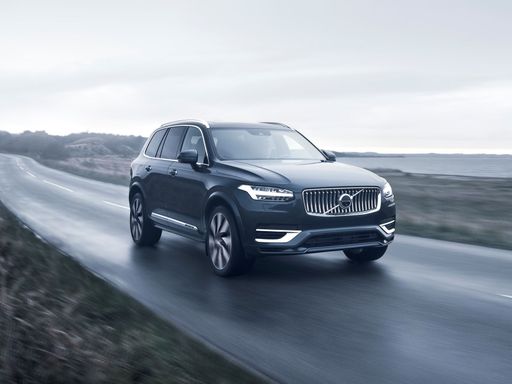 @ media.volvocars.com
@ media.volvocars.com
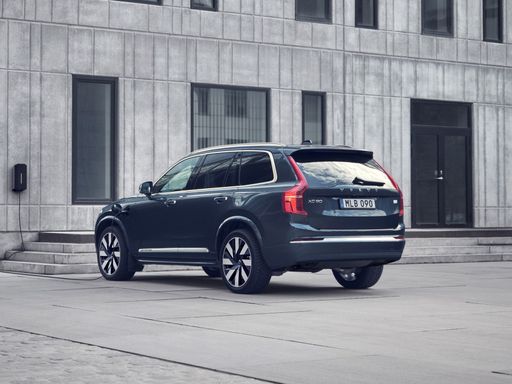 @ media.volvocars.com
@ media.volvocars.com
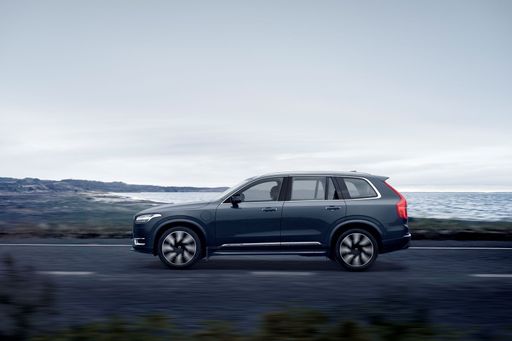 @ media.volvocars.com
@ media.volvocars.com
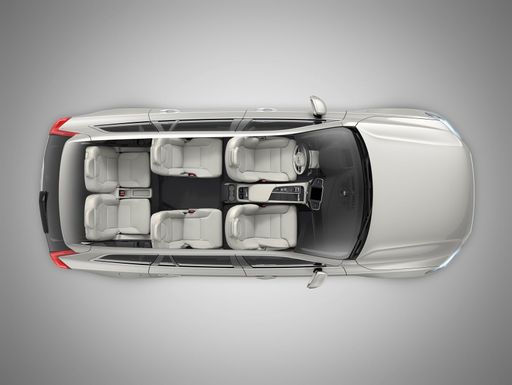 @ media.volvocars.com
@ media.volvocars.com
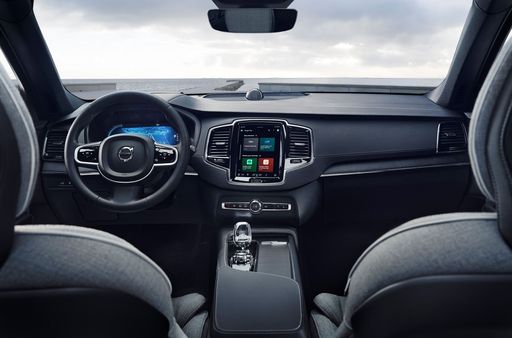 @ media.volvocars.com
@ media.volvocars.com

|
|
|
|
|
Costs and Consumption |
|
|---|---|
|
Price
38200 - 51100 £
|
Price
68500 - 81300 £
|
|
Consumption L/100km
6.8 - 7.2 L
|
Consumption L/100km
3.5 - 8.5 L
|
|
Consumption kWh/100km
-
|
Consumption kWh/100km
-
|
|
Electric Range
-
|
Electric Range
71 km
|
|
Battery Capacity
-
|
Battery Capacity
14.70 kWh
|
|
co2
179 - 188 g/km
|
co2
79 - 191 g/km
|
|
Fuel tank capacity
80 L
|
Fuel tank capacity
71 L
|
Dimensions and Body |
|
|---|---|
|
Body Type
Bus
|
Body Type
SUV
|
|
Seats
8 - 9
|
Seats
7
|
|
Doors
4
|
Doors
5
|
|
Curb weight
2031 - 2321 kg
|
Curb weight
2080 - 2297 kg
|
|
Trunk capacity
-
|
Trunk capacity
262 - 302 L
|
|
Length
5080 - 5480 mm
|
Length
4953 mm
|
|
Width
1956 mm
|
Width
1923 mm
|
|
Height
1973 - 1974 mm
|
Height
1771 mm
|
|
Payload
749 - 982 kg
|
Payload
653 - 710 kg
|
Engine and Performance |
|
|---|---|
|
Engine Type
Diesel
|
Engine Type
Petrol MHEV, Plugin Hybrid
|
|
Transmission
Manuel
|
Transmission
Automatic
|
|
Transmission Detail
Manual Gearbox
|
Transmission Detail
Automatic Gearbox
|
|
Drive Type
Front-Wheel Drive
|
Drive Type
All-Wheel Drive
|
|
Power HP
110 - 150 HP
|
Power HP
250 - 455 HP
|
|
Acceleration 0-100km/h
13.6 - 16.5 s
|
Acceleration 0-100km/h
5.4 - 7.7 s
|
|
Max Speed
161 - 174 km/h
|
Max Speed
180 km/h
|
|
Torque
300 - 350 Nm
|
Torque
360 - 709 Nm
|
|
Number of Cylinders
4
|
Number of Cylinders
4
|
|
Power kW
81 - 110 kW
|
Power kW
184 - 335 kW
|
|
Engine capacity
1997 cm3
|
Engine capacity
1969 cm3
|
General |
|
|---|---|
|
Model Year
2023 - 2024
|
Model Year
2024 - 2025
|
|
CO2 Efficiency Class
G
|
CO2 Efficiency Class
G, B
|
|
Brand
Renault
|
Brand
Volvo
|
Renault Trafic Bus
A Glimpse into the Renault Trafic Bus: An Icon of Versatility and Innovation
Amongst the plethora of vans designed for both business and leisure, the Renault Trafic Bus stands out as an exemplar of functionality, innovation, and style. Let's delve into what makes the Renault Trafic Bus a popular choice in the UK and across Europe, particularly focusing on its technical specifications and state-of-the-art features.
Performance Dynamics: Power Under the Hood
The Renault Trafic Bus, a staple in Renault's fleet, is driven by a robust diesel engine configuration with power outputs ranging from 110 PS to a formidable 170 PS. The diesel engines combine efficiency and power, offering torque figures between 300 to 380 Nm, ensuring smooth power delivery and capable load hauling.
Drivers can choose between manual and automatic transmissions, both designed to complement the Trafic's front-wheel-drive system. This flexibility ensures that drivers experience enhanced driving comfort whether they are navigating urban roads or cruising on the motorway.
Efficiency Meets Economy
The Trafic Bus showcases impressive fuel economy with consumption figures ranging from 6.8 to 7.2 litres per 100 kilometres. This efficiency is crucial for businesses aiming to minimise operational costs and for families seeking budget-friendly travel options.
With a generous fuel tank capacity of 80 litres, the Renault Trafic Bus is built to cover long distances with fewer fuel stops, making it an ideal choice for long haul journeys.
Technological Innovations and Comfort
The Trafic Bus isn't just about robust performance. Renault has integrated a suite of technological innovations designed to enhance driver and passenger comfort. Its cabins are equipped with the latest infotainment systems and safety technologies, providing an optimal blend of comfort and convenience.
The various trims, such as Life, Start, Spaceclass, and their respective EDC variants, cater to different needs and preferences, ensuring that customers can find the perfect configuration for their requirements.
Design and Dimensions: Space for Every Purpose
Space and versatility are at the heart of the Trafic Bus design. With its dimensions ranging from a length of 5080 to 5480 mm, and a width of 1956 mm, this vehicle offers ample room for passengers and cargo alike. The height stands between 1973 and 1974 mm, ensuring that even taller individuals can travel comfortably.
With seating for up to eight people and a payload capacity between 730 to 1010 kg, the Trafic Bus can transform seamlessly between a people-mover and a goods carrier.
Environmental Considerations
Renault has engineered the Trafic Bus with environmental responsibility in mind. The CO2 emissions range from 178 to 190 g/km, which, while modest for its class, aligns with the efficiency and performance goals set for this versatile vehicle. The CO2 efficiency class is rated as 'G', offering transparency in its environmental impact profile.
Conclusion: A Leader in Its Class
The Renault Trafic Bus continues to lead its segment through a blend of power, efficiency, and technological advancements. Whether it's for commercial transport or family adventures, the Trafic offers a reliable and adaptable solution, setting a high standard for multi-purpose vehicles.
For those seeking a distinguished blend of utility and comfort, the Renault Trafic Bus emerges as an exceptional choice, promising performance and innovation on every journey.
Volvo XC90
Introduction to the Volvo XC90: The Pinnacle of Swedish Innovation
The Volvo XC90 continues to uphold the Swedish car manufacturer’s reputation for delivering sophisticated and reliable vehicles. Known for its impressive blend of luxury, technology, and safety, the 2024 model year introduces updates that maintain its status as a leading luxury SUV. With options ranging from mild-hybrid to plug-in hybrid variants, the XC90 caters to a diverse array of needs and preferences.
Engine Options and Performance
The Volvo XC90 is available in both petrol mild-hybrid and plug-in hybrid configurations. The mild-hybrid version boasts a robust 250 PS, while the plug-in hybrid variant offers an astounding 455 PS. This range of powertrains ensures that drivers experience both efficient performance and the capability to tackle a variety of driving conditions.
Efficiency and Environmental Responsibility
One of the standout features of the Volvo XC90 is its commitment to environmental efficiency. The plug-in hybrid model achieves a remarkable fuel consumption rate of just 1.2 L/100km and an electric-only range of up to 71 km. These capabilities showcase Volvo’s dedication to reducing carbon emissions and promoting sustainable driving without compromising performance.
Cutting-Edge Safety Features
Volvo cars are synonymous with safety, and the XC90 is no exception. Incorporating advanced safety innovations such as Pilot Assist, City Safety with Autobrake, and Lane Keeping Aid, the XC90 provides drivers with confidence and peace of mind. These systems work together seamlessly to prevent accidents and protect passengers.
Luxurious Interior and Comfort
Step inside the Volvo XC90, and you'll be greeted by a meticulously crafted interior designed for comfort and convenience. The SUV accommodates up to seven passengers with ease, offering a spacious cabin and premium materials. Elegant designs, advanced infotainment technology, and premium sound systems transform every journey into a luxurious experience.
Price and Specifications
The Volvo XC90 is competitively priced, with a range starting from €79,890 up to €94,890, depending on the chosen configuration and features. Its dimensions, with a length of 4953 mm, width of 1923 mm, and height of 1771 mm, provide a substantial presence on the road. The luggage capacity ranges between 262 to 302 litres, allowing for flexibility depending on passenger and cargo needs. Equipped with an automatic transmission and all-wheel drive, the XC90 delivers a smooth and stable ride.
Conclusion: The Epitome of Modern SUV Design
The Volvo XC90 stands out as a top contender in the luxury SUV market, blending advanced technology, unparalleled safety, and luxurious comfort. Whether you choose the fuel-efficient plug-in hybrid or the reliable mild-hybrid version, the XC90 demonstrates Volvo's commitment to innovation and excellence. It remains a favourite among discerning drivers seeking a vehicle that embodies both style and substance.
The prices and data displayed are estimates based on German list prices and may vary by country. This information is not legally binding.
